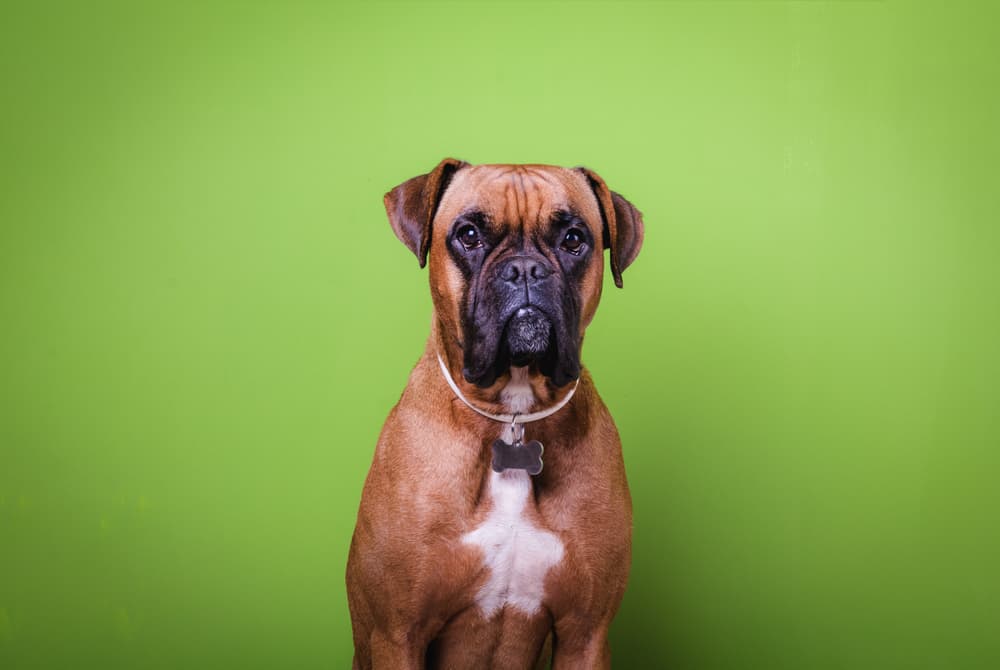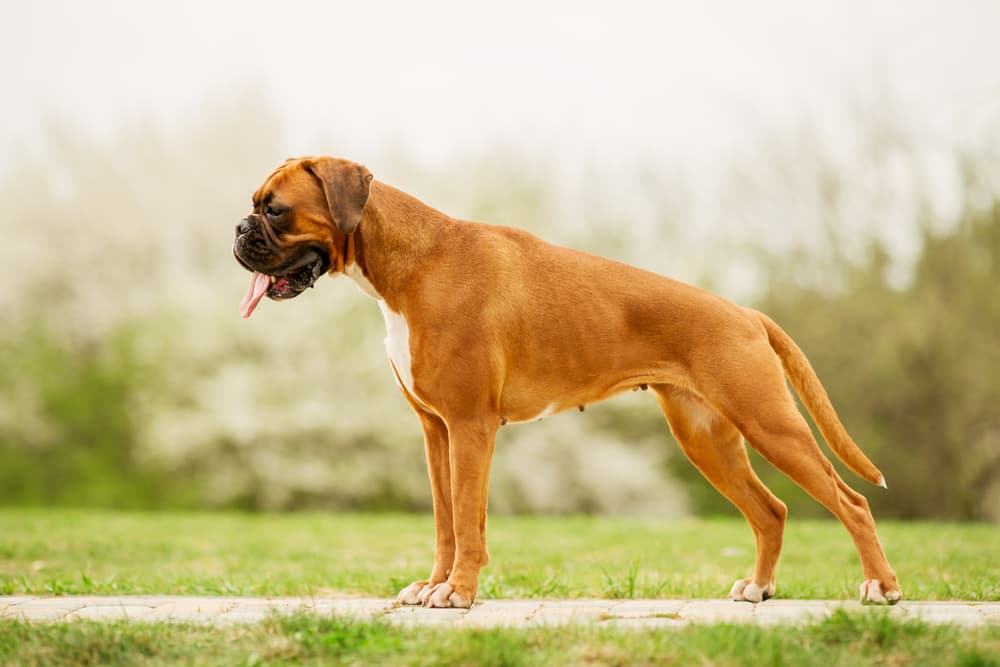In 2002, the Guinness Book of World Records awarded a Boxer pooch named Brandy the owner of the “Longest tongue on a dog ever.” Her tongue measured in at an incredible 17 inches (1 foot, 4 inches) and she still holds the title posthumously.

Boxer
Strong, handsome and jowly. That’s a boxer. While this breed can look quite intimidating at first, once you get to know them, their playful and enthusiastic personality shines through.
Country of Origin
Germany
Breed Group
Working Group
Height
Male 23-25 In
Female 21.5-23.5 In
Weight
Male 60-70 Ib
Female 50-65 Ib
Life Span
10-12 years
In a Nutshell
Boxers are affectionate, playful dogs who make great companions for families with children. Bright, alert and sometimes silly, the Boxer is one of America’s most popular dogs and has been for quite some time. Boxers are versatile dogs who are happy wherever you are (wherever they’ll get plenty of love) and don’t mind spending time indoors. Oh, and they also love to snuggle.
Life With a Boxer
Looks & Personality

Boxers are medium-sized, athletic dogs with muscles that ripple beneath a short coat that comes in brindle, black, or white. There are no miniature or giant varieties of the Boxer. They’re brachycephalic animals, meaning they have broad, short skulls and an underbite.In some cases, this can lead to difficulty breathing. One of the delightful qualities that set the Boxer apart from other breeds is the unique, almost-pleading expressiveness of their dark-brown eyes.
Enough about the Boxer’s good looks. What about their temperament? Although Boxers were historically used as fighting dogs, today they’re everything you’d expect from a family pet: loyal, affectionate, playful, courageous, and intelligent. Because they’re so patient, lively, and affectionate, they make especially great dogs for households with children. What’s more, they take their job of watching over their families quite seriously.
A tip from a vet
A tip from a trainer
What about your Boxer?
Did You Know

The term “Boxer” started as an affectionate nickname, derived from the breed’s tendency to use its front legs in a manner similar to boxing athletes in the ring.

Boxers have the longest tongues of all dog breeds, so it’s not surprising that they were a popular performing breed.

White boxers are not really considered to be true boxers as they do not meet the breed standard. They’re also more likely to be deaf than Boxers of other colors.
In The News
Famous Boxer Owners
The History Behind the Breed
Bred for hunting and working, the Boxer is a Mastiff-type breed that was developed in Germany in the late 19th century. The Boxer is an ancestor of the Bullenbeisser (meaning bull biter), a now extinct breed of dog. Descended from the war dogs of the Assyrian empire, the Bullenbeisser was valued for its strength, agility, and tenacious hold on boars, bulls, and bears. It’s thought that this breed was crossed with the Old English Bulldog, providing the basis for the modern-day Boxer.
The Boxer was officially recognized as a breed by the American Kennel Club in 1904. According to the breed standard, there’s only one type of Boxer breed, but they come from different bloodlines. The American Boxer was the last variant to be developed from the Boxer line and is the easiest variant to recognize, thanks to the lack of wrinkles in adult dogs. That said, your Boxer may also be an example of the German or UK variant.
As working dogs, Boxers were used for bull baiting, livestock herding, and hunting large animals like boars and bison. They were also one of the first breeds used for military and police service. Unfortunately, Boxers were also used as fighting dogs. Today, Boxers are now valued for their gentler side and are unlikely to act out when they’ve been properly bred, trained, and nurtured.
If a Boxer Could Talk…
A Quick Anatomy Lesson


Brachycephalic dogs, such as the Boxer, were bred to have a characteristic flattened face and short muzzle. It’s cute, but it may put them at a higher risk of developing certain health issues. Responsible breeders will use DNA tests and screening schemes to test Boxers for several health conditions, including hip dysplasia, heart conditions, thyroid deficiency, and certain cancers. Your veterinarian can also help you spot signs of trouble early and develop a proactive, effective healthcare regimen.
Common Health Problems
What about your Boxer?
















